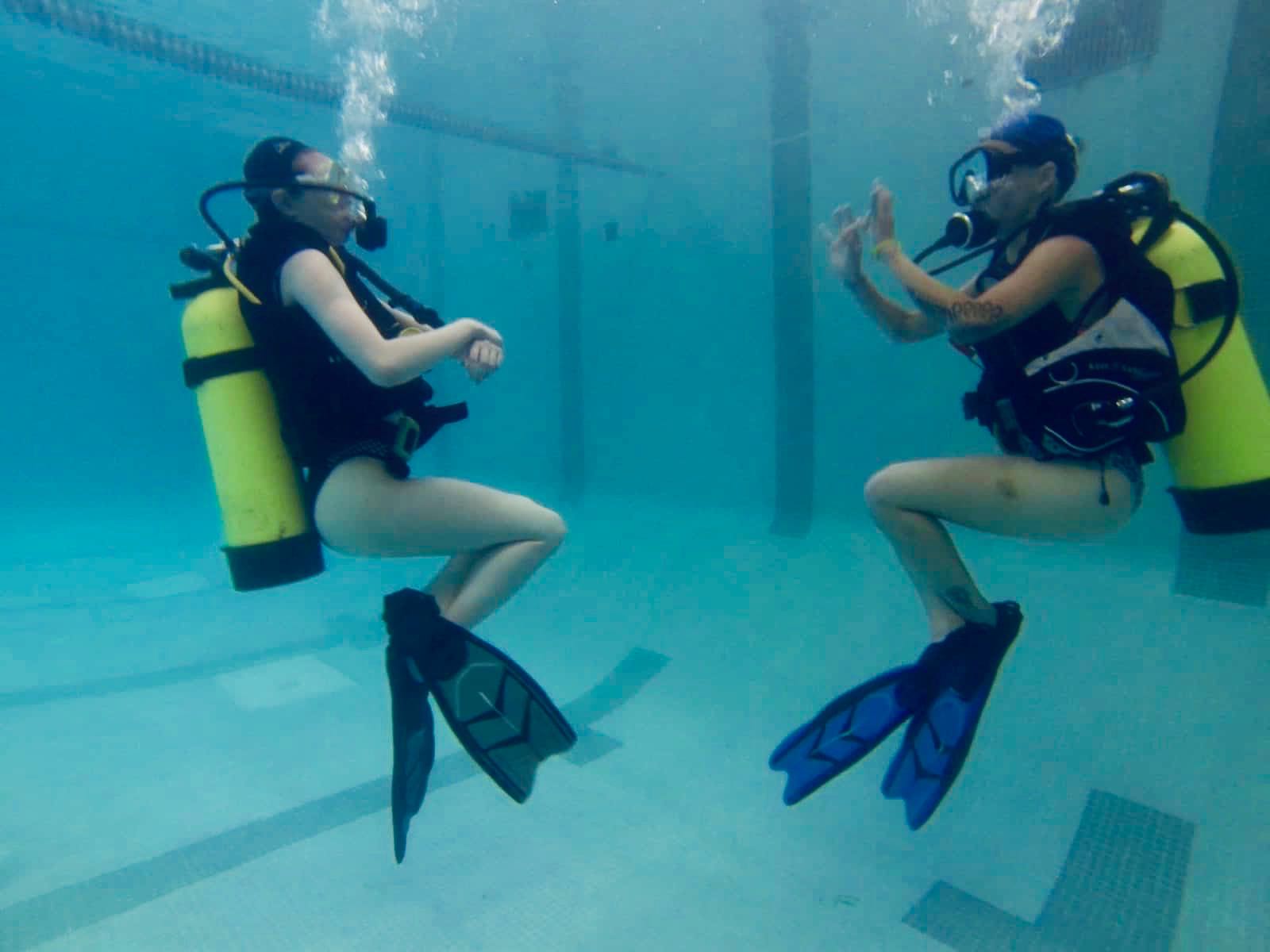My partner, Nathan, and I began taking scuba diving certification lessons in our off-hours this summer. Having only ever snorkeled on vacation, we were thrilled at the thought of being able to see even more of the underwater world. Breathing while fully submerged for the first time was an exhilarating if unsettling experience.
I learned right away that water inevitably leaks into a scuba mask. And instead of staying calm and using the techniques we learned to clear it out, I panicked, started choking, and shot up to the surface. Granted, I was only three inches deep in the shallow end of a pool in Queens — but had I been out in the open water on a dive, this would have been a big problem.
The thing is, I wasn’t really choking; I knew I had my regulator in my mouth, which would allow me to breathe the whole time. And I was frustrated that my stress got in the way of knowing what to do (not to mention, Nate succeeded on every try!). But our instructor reassured me that this is one of the most common responses in new divers. “If you take a moment to let the fight-or-flight panic mode pass,” Nicole Zelek, founder of Superdive Scuba, tells Thrive, “you can access your problem-solving capabilities.” Translation: When we’re panicking, we have a harder time seeing the solutions that are right in front of us.
So instead of reacting right away, the next time my mask filled with water, I took a breath. This simple pause allowed me to find my calm and remember how to clear my mask. Out on a real dive, the ability to steady your breath in a moment of panic could be life-saving. If, instead of breathing calmly to center yourself when your mask floods at 60 ft. deep, you shoot up toward the surface in a panic, your lungs may overexpand, Zelek explains. At lower depths you risk decompression illness, “the bends.” Or you may not notice an obstruction overhead, like a boat.

Courtesy of Superdive Scuba
Breathing is something we’re all accustomed to doing automatically, usually without any thought. But when we pay attention to it — taking deep breaths or slowing down our inhalations and exhalations as needed — we can feel more in command of our body and mind. Our breath is always there to ground us, support us, and help us think calmly and clearly.
I’ve come away from my certification not only with an exciting new set of skills under my belt, but a valuable tool for calming my anxiety and finding my focus in a stressful moment. Thanks to what I learned in that pool in Queens, “breathe through your problems” has become my go-to mantra — both in and out of the water.
Follow us here and subscribe here for all the latest news on how you can keep Thriving.
Stay up to date or catch-up on all our podcasts with Arianna Huffington here.


